Fashion forecasts, body shapes, or stereotypes: What's behind the convergence of women's pro team kits?
Are trend forecasters more influential in women's cycling, or do the sponsors want to portray something different?


It is a truth universally acknowledged that there has been a distinct convergence of design elements across a number of pro women's team kits going into 2022.
Arguably, 2021 was no different. Commentators and fans alike squinted at their screens during the course of what is now yesteryear, struggling to distinguish between the purple hues of the Women’s World Tour Leader’s jersey, Liv Racing and SD-Worx.
Having exhaled a sigh of relief at the end of that eye-straining era, it appears that for the new year we are to be faced with the same problem, but in a new shade: in 2022, pink and yellow fades appear to be 'en vogue'.
Regardless of your impressions of the UCI’s decision to shake its head at some kits whilst simultaneously nodding others through - what's the cause of the copycat kit phenomenon?
Fashion forecasts
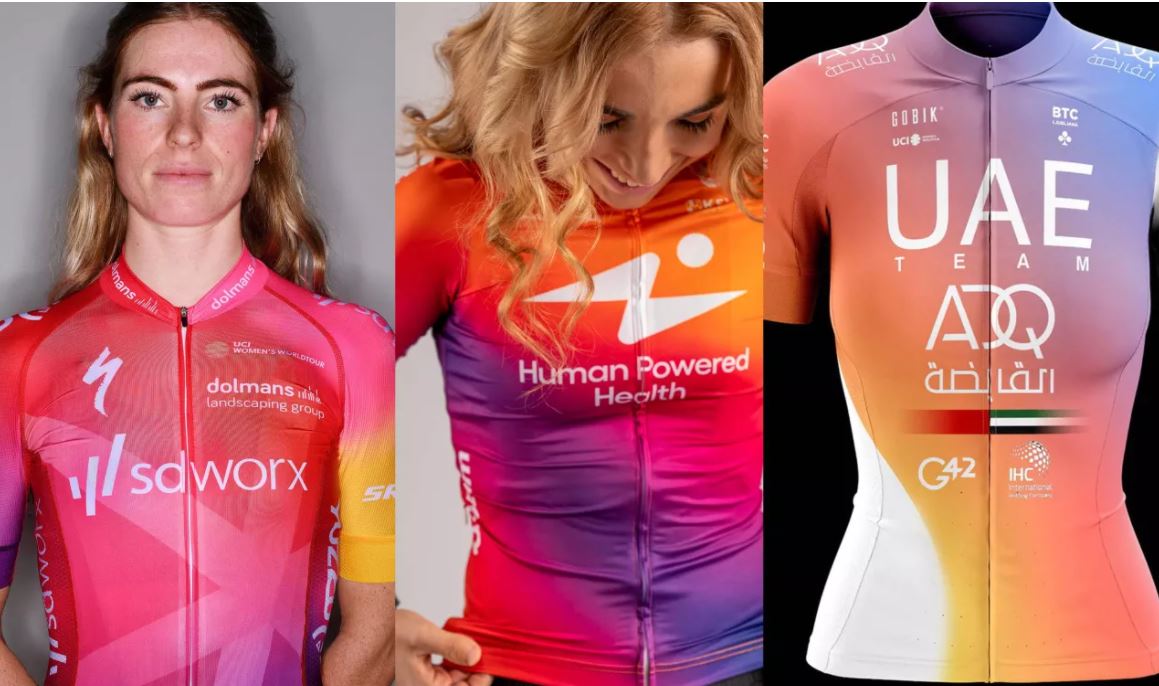
Not heard of the WGSN - or Worth Global Style Network? No, neither had I until I visited a cycling clothing brand's HQ some years ago.
WGSN is the leader in providing fashion forecasts to a huge array of industries. Its influence is behind a myriad of 'choices' we, the public, believe we make daily.
“WGSN is the biggest forecast trend website, they do everything from materials to food to colours to things that are happening in the market, it's a humongous wealth of information,” explains Andrea Thomas, Head of Design at Le Col - a brand that has designed kit for women's (Drops, now Le Col-Wahoo) and men's (Bahrain-Merida and Bora-Hansgrohe) teams.
The latest race content, interviews, features, reviews and expert buying guides, direct to your inbox!
"They will look at catwalks, people on the street, trends online, paint colours, homewares, it's a curated wealth of what's going on in the world.”
Most clothing brands, Le Col included, use these forecasts when designing their core ranges. It's why most cyclists will know at least one friend who seems to be glued into their 'orange cycling jacket', and why, all of a sudden, 'duvet style' gilets and down jackets are all of a sudden a staple.
I gave up on fashion magazines a while ago (unless feeling particularly pre-menstrual and, for some reason, intent on depressing myself further), but, a brief Google investigation leads me to believe that ‘Orchid Flower’ (pink/purple) is going to be big in 2022, among a range of other vibrant pinks which speak to positivity in an otherwise dreary pandemic plagued landscape.
So, are the brands designing women’s team kit leaning on these trends?
“It really depends on the team, and the brand who is clothing the team, there's probably elements of it,” Thomas says, though adding “there are probably other factors, too.”
One such factor could well be rider preference, which in true chicken/egg style may be influenced by fashion trends.
“We do take a lot on board from the riders, what they want to look like in their kit, their influences. And I would hope that other brands do that as well, [the similarities] might be down to influences in the teams. It could be what they’re seeing on the road filtering back,” Thomas said.
Body shape
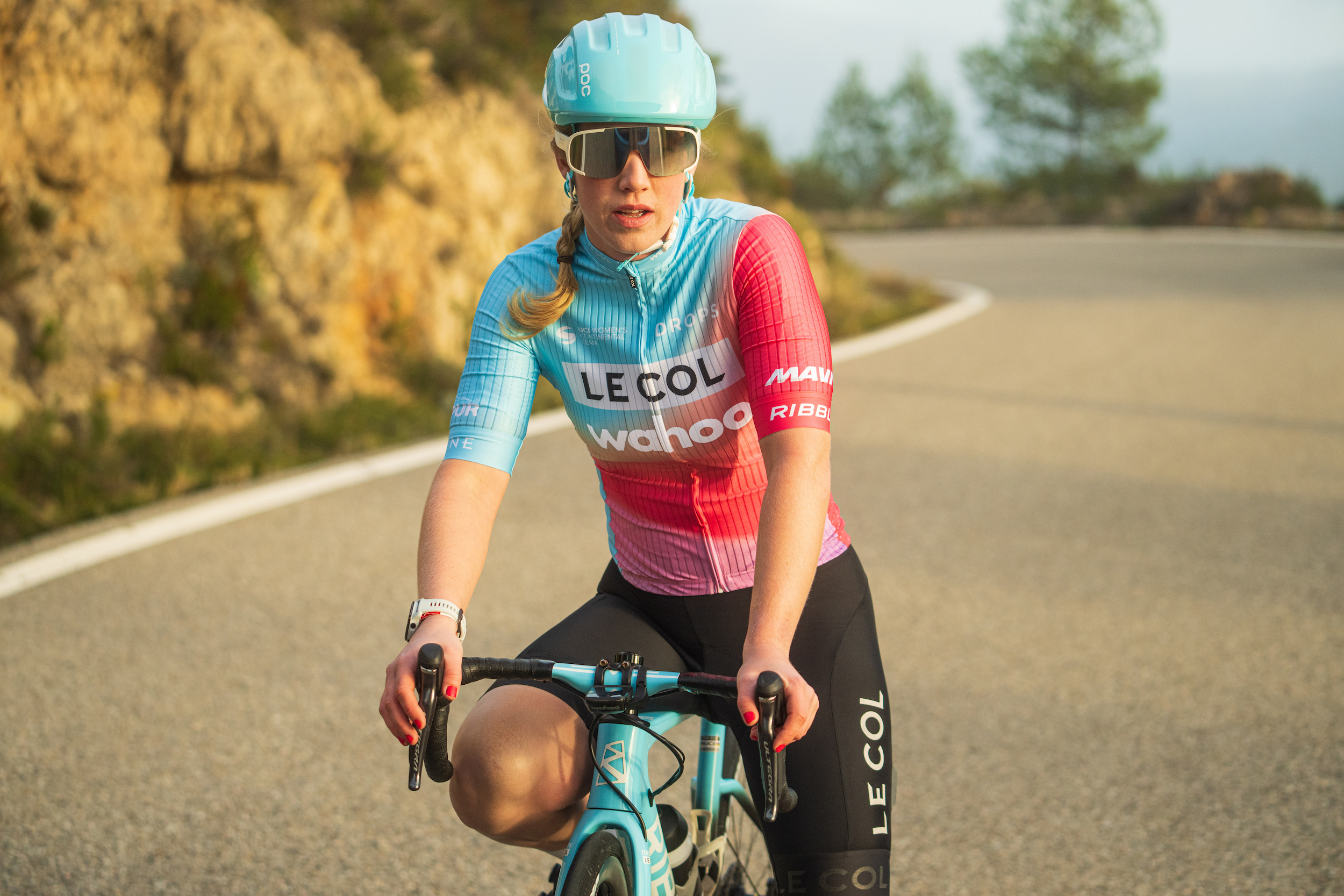
The design similarities don’t stop at colour - there’s a distinct collection of fades on show across women’s cycling team’s this year. Why so?
“At Le Col, we like to make sure that when we introduce an item for men, we have a women’s equivalent. But we do tweak the shapes so that they are more flattering for women - and one of the things you’ll see is [a difference] in the distribution of colour.”
Why? Physiology.
“Men, especially cyclists, have a similar body shape - there's obviously bigger and smaller sizes, but they do have similar proportions, whereas women can be so different,” Thomas outlines.
“[A] really aggressive box which you'll have on a lot of men's kits, which I guess speaks to a more historical shape, is really difficult on women because you range in sizes so greatly. You’ll have these really tiny 60kg riders, [and] other girls who might be [wearing a size] Small but have a bigger chest.
"Girls are just amazingly different in their bodies"
Andrea Thomas, Head of Design at Le Col
“If I were to put a jersey on with a box on it, you probably might not see the box!" Thomas laughs, "whereas on the tiny girls, you'd see that box really clearly. So once you line them up [for example at a team presentation], they're all going to look completely different because girls are just amazingly different in their bodies," she says, speaking to differences that are to be celebrated, not downplayed.
"Having something softer that fades through and is not such a clear, prescriptive shape is much easier and more flattering across everyone.”
All of a sudden I'm questioning the high prevalence of blocky lines in my own wardrobe, but, it all makes sense.
Sponsor requirements
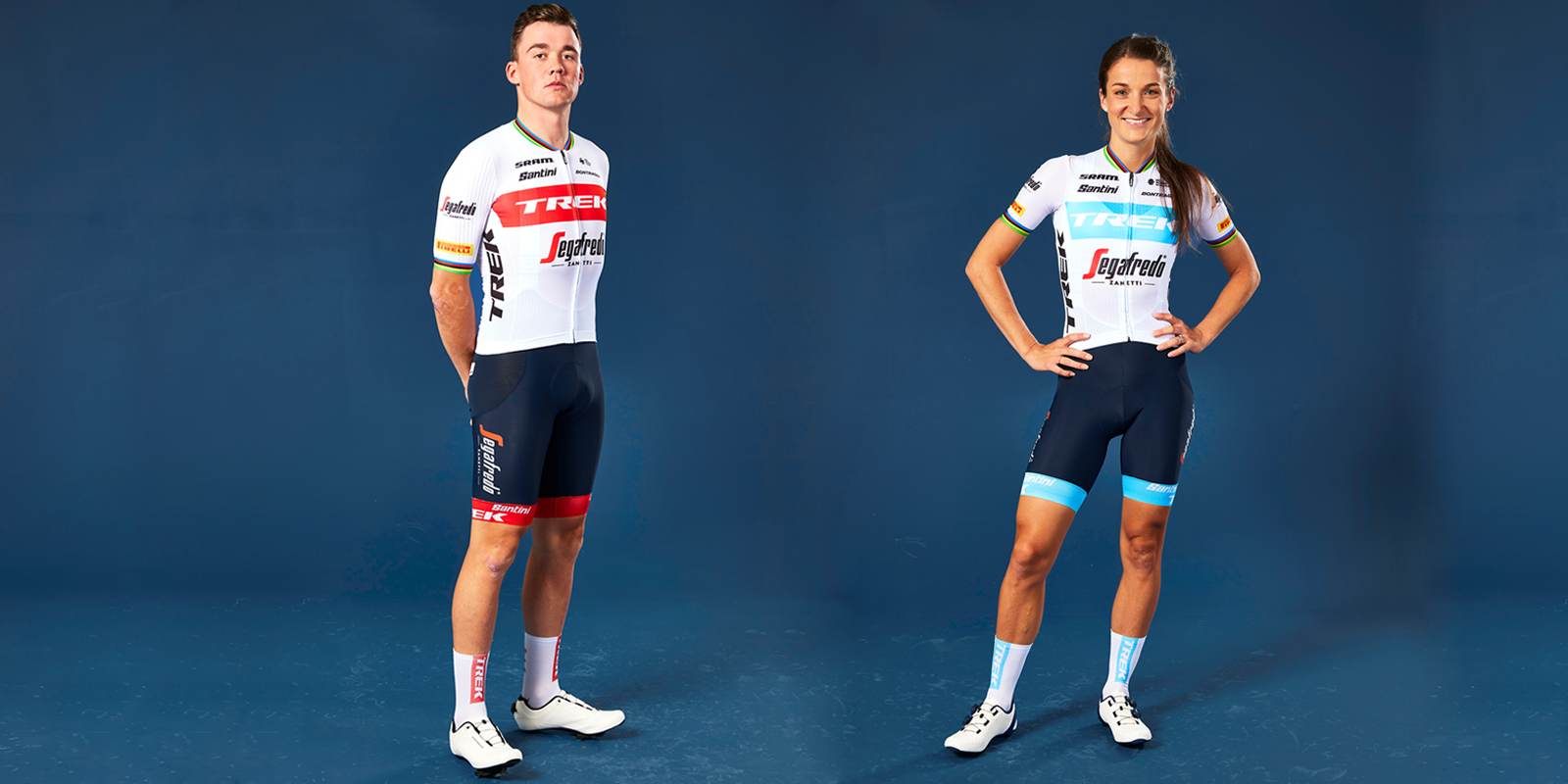
Of course, not all teams have adopted the 'pink orchid' fade.
Trek-Segafredo, for example, has mirrored its men’s and women’s kits, a departure from the distinct designs of 2021. But a pro outfit's outfitting also looks to represent the team’s ethos, and a big focus for Trek-Segafredo - which famously ensures riders gain equal financial reward by matching prize winnings from its own budget - has been equality, so what better way to speak to that than matching kit?
Liv Racing - Liv Racing Xstra for 2022 - was divisive in its choice of a giant purple flower for 2021; but then, Liv is a women’s specific bike brand that exists to celebrate the differences between men’s and women’s bodies via a breakaway from the hugely successful 'Giant' arm of the business.
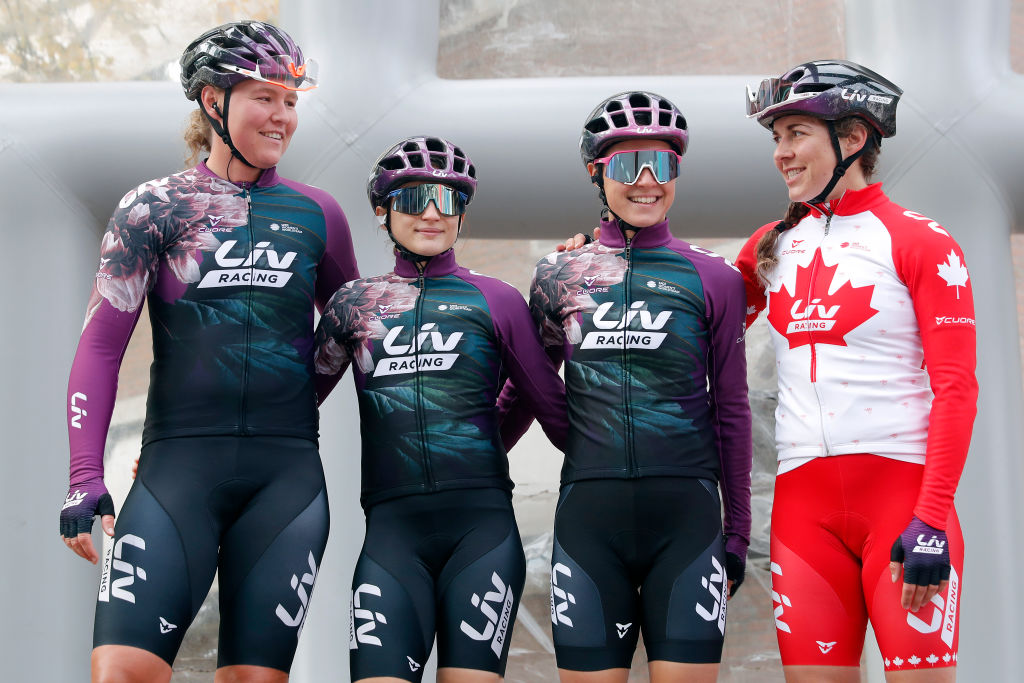
The fact is, a brand that’s aiming to sell showers and cookers through bike racing is going to view kit design very differently when compared with one created to grow the women’s bike market.
Unveiling its distinctive 'not a wallflower' kit in 2021, Liv proclaimed: "The flower is boldly, unapologetically feminine—an expression that represents women everywhere and honors the vision and work of the women-led brand."
There are market trends to look out for, too, and - as any cycling retailer will tell you - whether due to natural inclination or a self-fulfilling prophecy of availability (that really is something to unpack another day): pink sells.
“[Brands might use similar colours] because that's a bestseller in their range. In all honesty within women's ranges, pink does really well, so they may just want everyone to be wearing this kit this season, or they may want to match the bike,” Thomas says.
The final say...
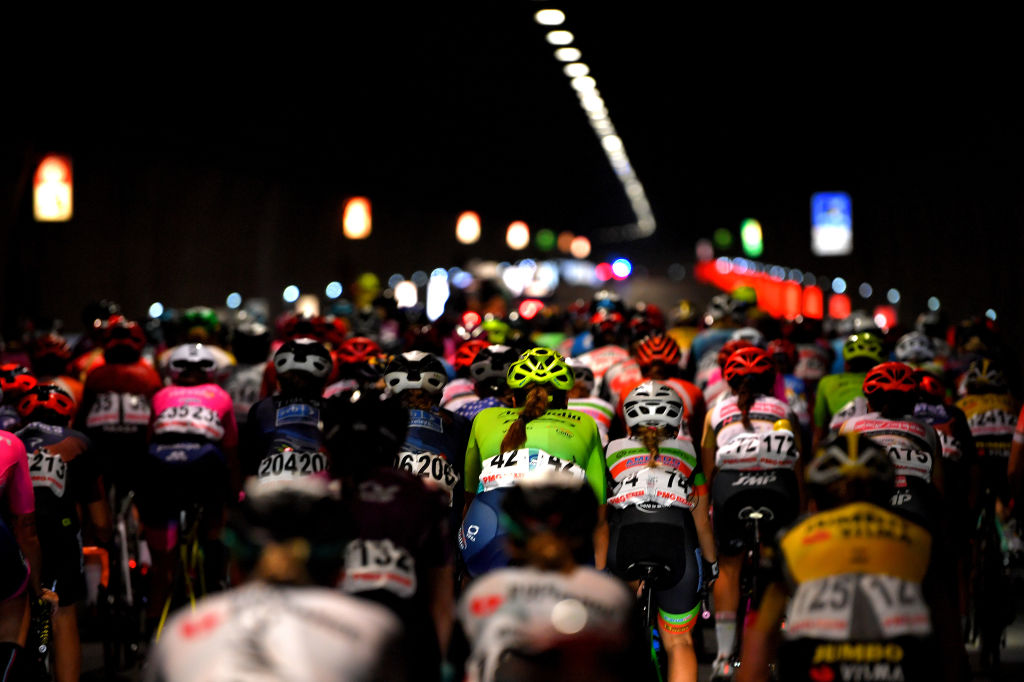
It's at moments like this where I'm reminded of the lessons Cycling Weekly took from Olympic silver medalist Elinor Barker, when she guest-edited our women's edition of the magazine: all too often we fall into the trap of comparing every element of women's sport to the men's, instead of celebrating the stories and the characters that make women's cycling the engaging and inspiring spectacle that it is.
Several of the women's team kits of 2022 have shared an undeniable set of characteristics. But men's team kits share similarities too: arguably, most are a jigsaw of straight lines held together by one primary colour; a style guide brought about by decades of masculine fashion influence.
The complicating factor with the women's kits has been the logistical difficulty of differentiating jerseys on screen. After decades of frustration, following untelevised races via broken Twitter reports, and tuning in to see only the final blur of a sprint before being transported back to the men's pre-amble of a 300km race, there are worse problems to have.
Michelle Arthurs-Brennan the Editor of Cycling Weekly website. An NCTJ qualified traditional journalist by trade, Michelle began her career working for local newspapers. She's worked within the cycling industry since 2012, and joined the Cycling Weekly team in 2017, having previously been Editor at Total Women's Cycling. Prior to welcoming her first daughter in 2022, Michelle raced on the road, track, and in time trials, and still rides as much as she can - albeit a fair proportion indoors, for now.
Michelle is on maternity leave from April 2025 until spring 2026.
